
Using oak barrels in the winemaking process can have a profound impact on the flavors and character of a wine.
Different oak types impart different wine flavors, including spice, vanilla, mocha, and even chocolate. Winemakers use oak barrels for aging red and white wines. French, American, and Hungarian oak are common. Cabernet Sauvignon, Merlot, Pinot Noir, and Chardonnay are often oaked.
Let’s dive into the connection between oak barrels and wine flavor.
- The Role of Oak Barrels in Winemaking
- Oak Barrel Characteristics: Flavors and Aromas
- Oak Barrel Aging Techniques: How Oak Aging Works
- Wine Characteristics
- Oak Barrels and Wine Styles
- Choosing the Right Oak Barrels: A Delicate Decision
- Renowned Wine Barrel Producers
- Final Thoughts – Oak Barrels for the Wine Wine
- Thirsty for More?
The Role of Oak Barrels in Winemaking
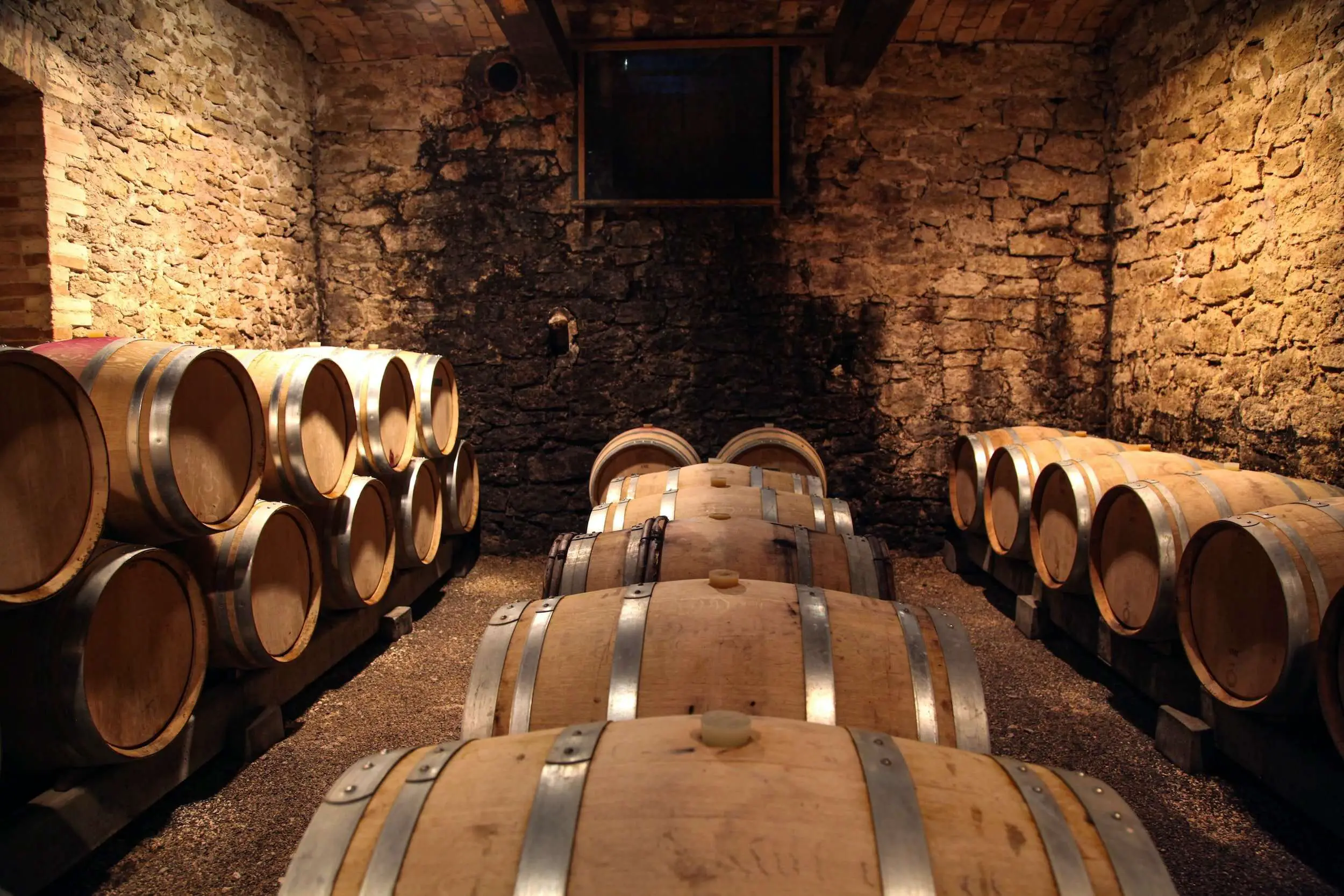
In the art of winemaking, oak barrels take center stage for many classic wine styles, playing a crucial role in creating the flavors we love.
This starts with the many oak barrel types, including French, American, and Hungarian oak.
- French oak is known for its subtle flavors and delicate structure, imparting hints of vanilla and spices.
- American oak, on the other hand, adds bold and robust flavors like coconut and dill.
- Hungarian oak offers a unique combination of both French and American characteristics, providing a blend of flavors.
Different oak species have different qualities. Winemakers choose oak barrels because they add complexity to the wine’s flavor profile, but also alter the structure of the wine.
Go Discover: What is Semillon?
Skilled craftsmen, known as cooperages, meticulously shape and assemble the staves, hoops, and heads to create a durable vessel.
Fun Wine Fact: The way the barrel is constructed influences factors like oxygen permeability, which impacts the aging process and overall flavor profile of the wine. Oak barrels allow for small amounts of oxygen exchange with the wine. Over time, this will help soften red wines’ tannins.
Barrel construction is a skilled trade. Some high-end producers have their own cooperages (barrel-making shops) so that they can quality control 100% of the production process.
Helpful Tip: Here’s a quick guide to walk you through how to taste wine structure.
Now that we understand the role of oak barrels in winemaking, let’s explore the specific characteristics they bring to the table.
Oak Barrel Characteristics: Flavors and Aromas
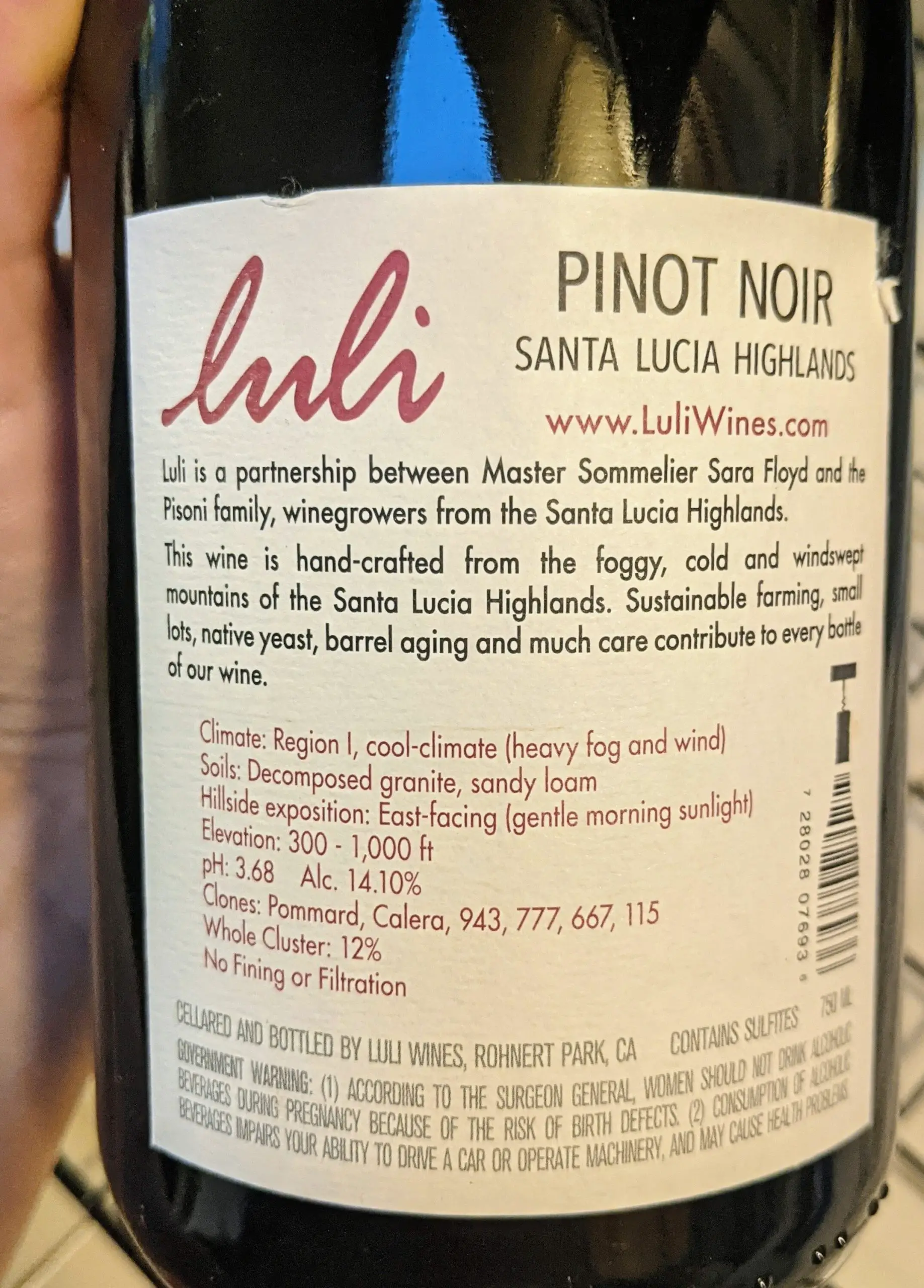
Helpful Tip: If you see any of these words on a wine bottle, it means it has oak influence:
- Baking spice
- Allspice
- Cinnamon
- Clove
- Vanilla
- Caramel
- Butterscotch
- Smoke
- Toast
- Mocha
- Coffee
- Chocolate
One of the key elements oak barrels contribute to wine is the release of flavor compounds. These compounds add depth and complexity to the wine, creating a richer, more complex tasting experience.
Oak is one of the few ingredients that winemakers can use to shape their wines.
Flavors can range from subtle hints of vanilla and spice to more pronounced flavors that dominate a wine’s profile, like dark chocolate and black licorice.
Helpful Tip: When a winemaker introduces a process to wine that results in a new aroma or flavor, we call these “secondary notes”. Primary notes are from the grapes. Secondary notes, like spice from oak, come from winemaking.
Aromas play a vital role in our perception of wine, and oak barrels have a part to play in this as well. As the wine ages in the barrel, it absorbs the aromatic compounds present in the oak, infusing it with secondary notes.
Helpful Tip: Go check out how wine can taste like chocolate here.
These aromas can range from warm and toasty notes to a medley of warm spices (e.g., cinnamon, allspice, cloves), creating layers of complexity in your wine.
Fun Wine Fact: Did you know that the toasting level of an oak barrel can have a significant impact on the flavors imparted to the wine? The toasting process involves heating the interior of the barrel, which can bring out different characteristics. Light toasting tends to enhance the fruity flavors, while medium toasting brings out more complex notes of caramel and spice. Heavy toasting can result in smoky and toasty flavors.
Tannins, a key component in red wines, are also influenced by oak barrels.
Tannins add structure and texture to the wine. Contact with oak can help soften and integrate tannins over time. This process can result in smoother and more balanced red wines.
Helpful Tip: Go check out this 30-second tasting tip on how to taste tannins.
Impact of Oak Barrels on Wine Flavor
When it comes to wine flavor, oak barrels play a significant role. They impart their distinct “oak flavor” to the wine, adding complexity and depth. Notes of vanilla, caramel, toast, and baking spice are often associated oak barrel aging.
Integration of flavors between wine and oak is crucial in the winemaking process and takes time – that’s why the wine is aged in oak.
It takes time for the flavors from the oak barrels to marry with the young wine. When done well, oak becomes a supportive element that enhances the wine’s natural attributes without overpowering them.
Achieving balance is key.
Any oak that you taste in your wine should be in equilibrium with other elements, such as fruit flavors, acidity, and tannins.
Too much oak can dominate the wine.
Personal Note: I’m not a fan of strongly oaked wines. It’s like French kissing an oak tree. But I have a close friend who can’t taste oak at all. Our tastebuds and sensitivities are different. Yours may be, too, and that’s okay.
Winemakers carefully consider the age of the oak barrels, as new barrels provide more pronounced flavors, while used barrels offer subtler influences.
New oak barrels will impart the strongest flavors to young wine.
Helpful Tip: Ever wonder what makes a wine a Bordeaux? Go find out!
After about 3 years, oak barrels are considered ‘neutral’, meaning that they won’t contribute any more toasty spicy notes to the wine. That’s okay. These neutral oak barrels still provide support with gentle oxygen exchange, helping young red wines mellow out.
Oak Barrel Aging Techniques: How Oak Aging Works
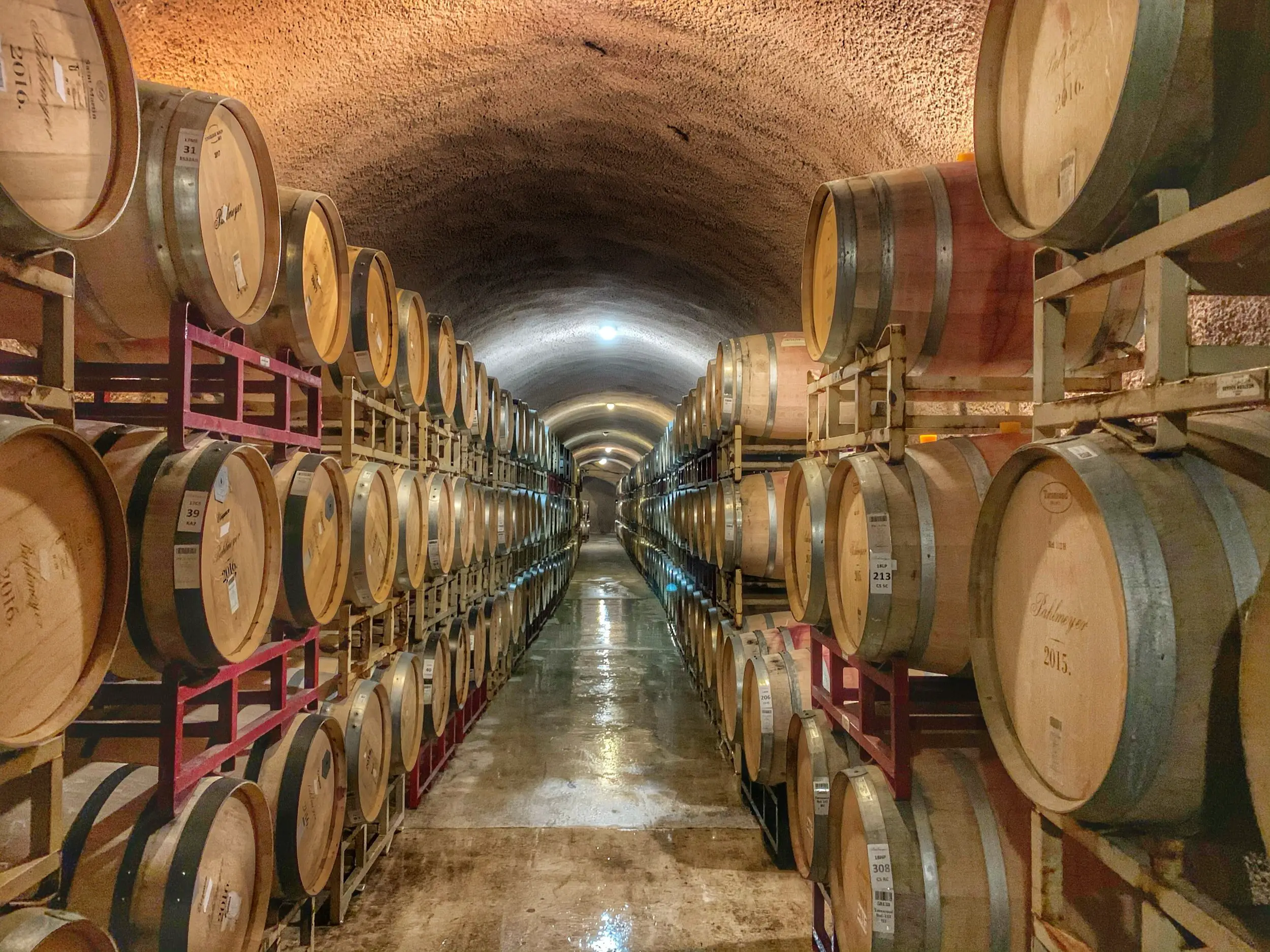
Barrel aging is a pivotal step in winemaking that influences the flavors and textures of the final product, to include aging duration and toasting levels. Let’s explore the key techniques used to age wine in oak barrels and their impact:
Wine Characteristics
Wine Characteristics
| Aspect | Description |
|---|---|
| New Oak | Freshly crafted oak barrels infuse the wine with pronounced flavors like vanilla, spice, and toasted notes, adding depth and complexity. |
| Used Oak | Previously used barrels provide more subtle influences, allowing the wine’s natural qualities to shine through. |
| Aging Duration | The length of time the wine spends in the barrel affects its development, with longer aging resulting in increased complexity and smoother texture. |
| Toasting Levels | The degree of toasting applied to the oak barrels contributes different flavor profiles, ranging from light and fruity to medium and complex, or even heavy with smoky and toasty nuances. |
| Barrel Size | The size of the barrel can impact the wine’s development, with smaller barrels often intensifying flavors more rapidly than larger ones. |
| Barrel Material | The type of wood used for the barrel, such as oak or chestnut, can impart distinct characteristics to the wine. |
Fun Fact: Some winemakers employ a combination of aging techniques, using a mix of new and used barrels or varying toasting levels within the same batch. This approach creates layered flavors and showcases the versatility of oak (and the skills of the winemaker).
Oak Barrels and Wine Styles
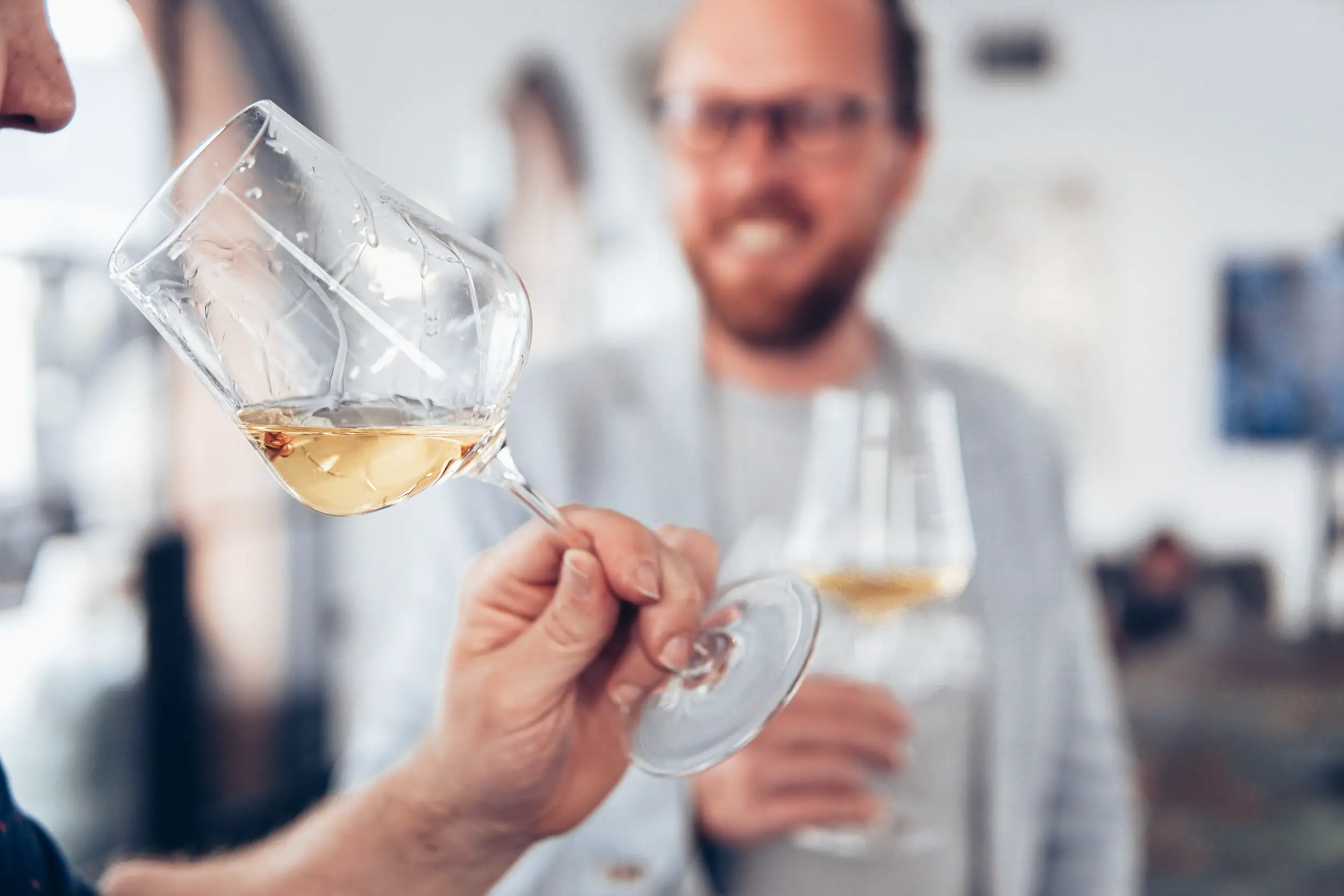
The use of oak barrels in winemaking has a profound impact on different wine styles, whether they are red or white.
- Red Wine: Oak barrel aging enhances the richness and complexity of red wines, adding layers of flavor and improving structure through aging.
- White Wine: Oak barrels can also influence white wines by imparting creamy textures, subtle vanilla notes, and a touch of spice.
- Chardonnay: This popular white grape variety often benefits from oak aging, resulting in a rounded mouthfeel and a complex flavor profile.
- Cabernet Sauvignon: A renowned red wine grape, Cabernet Sauvignon can exhibit impressive depth and structure when aged in oak barrels, with oak contributing to tannins and a silky smooth mouthfeel.
- Oaked vs. Unoaked: Some wines are intentionally crafted to be unoaked, allowing the pure expression of the grape variety and the characteristics of the vineyard to shine through. Many aromatic white wines, like Sauvignon Blanc and Pinot Grigio, are more common in an unoaked style. Oaked wines, on the other hand, showcase the influence of oak with added complexity.
Fun Wine Fact: Oak barrels were first used to store wine, not a winemaking tool. Through time, winemakers discovered and came to appreciate how oak could interact favorably with wine to shape its style.
In the next section, we’ll explore some additional considerations and factors that winemakers take into account when choosing oak barrels for their wines.
Choosing the Right Oak Barrels: A Delicate Decision

Selecting the appropriate oak barrels is a weighty decision for winemakers, influenced by their preferences, flavor objectives, budget, and available suppliers.
- Winemaker’s Preference: Each winemaker has their own style and vision for the wine they craft. Personal preference plays a significant role in determining the type of oak barrel they choose, as it can greatly impact the final flavor profile of the wine.
- Flavor Objectives: Different oak barrels contribute distinct flavors and aromas to the wine. Winemakers consider their flavor objectives, whether they seek pronounced oak influence or a more subtle integration, to achieve what they want in their final wines.
- Budget: Oak barrels can vary significantly in cost. French oak barrels, for example, are more expensive compared to American oak barrels. Winemakers need to weigh their budget constraints while aiming for the desired quality and flavors.
- Oak Barrel Suppliers: The choice of oak barrel suppliers is vital, as it ensures the availability of high-quality barrels that meet the winemaker’s specific requirements. Establishing reliable relationships with reputable suppliers is essential for consistent and exceptional wine production.
Fun Fact: French oak barrels are more expensive, typically ranging from $800 to $3000, while American oak barrels are more affordable, ranging from $300 to $800. This cost disparity is influenced by various factors, including the scarcity and growth conditions of the oak trees, the craftsmanship involved in barrel production, and the expenses associated with transportation.
Winemakers know how much their wine will sell for. Budget everyday wines won’t be made with oak barrels. Premium wines, however, often see time in oak.
Helpful Tip: Go check out this post on how wine gets priced. It’s a long post but covers all of the major factors.
Renowned Wine Barrel Producers
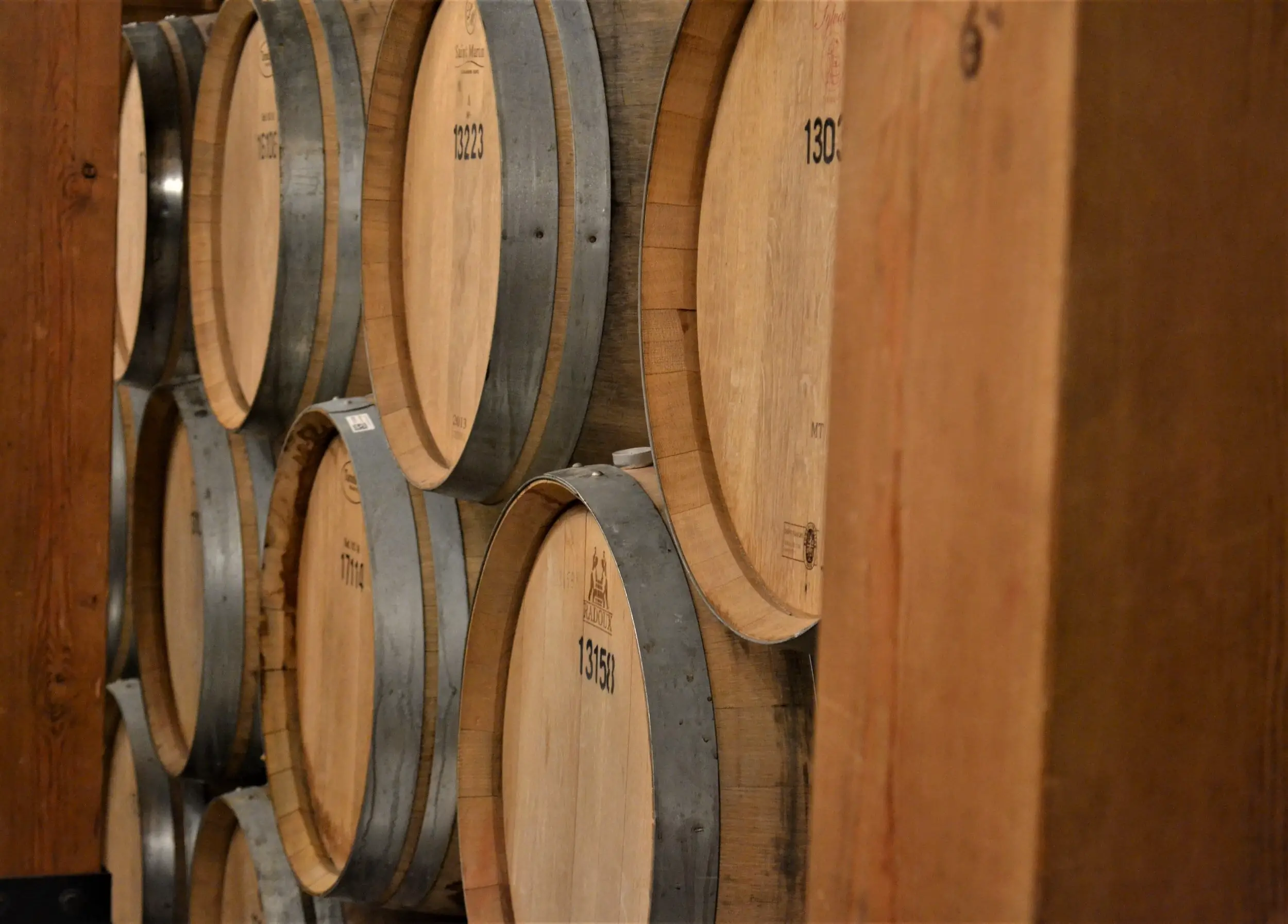
When it comes to oak barrels, certain cooperates, or barrel makers, have gained worldwide recognition for their craftsmanship and ability to produce exceptional barrels. Here are three renowned wine barrel producers:
Tonnellerie François Frères
With a history going back to 1910, Tonnellerie François Frères is a prestigious French cooperage known for its commitment to quality and its skill in crafting oak barrels. Their barrels are highly sought after by winemakers seeking to enhance the flavors and aromas of their wines.
Seguin Moreau
Established in 1870, Seguin Moreau is an esteemed French cooperage (and has a location in Napa, too) that has earned a stellar reputation in the industry. Their barrels are known for their precision and the ability to bring out the best qualities in wines, offering various toasting options to achieve desired flavor profiles.
Taransaud
Based in Cognac, France, Taransaud is a renowned cooperage that’s produced oak barrels for both wine and spirits. Since 1932, they have been known for their commitment to quality and innovation, supplying top-quality barrels to winemakers worldwide.
Go Explore: Vineyard location and climate are everything when it comes to wine quality. Here’s how wind affects wine quality.
Winemakers often seek out barrels from specific barrel makers to ensure the quality of their wines, developing relationships that last for years. These cooperages are just a few examples of the many exceptional wine barrel producers in the industry.
Final Thoughts – Oak Barrels for the Wine Wine
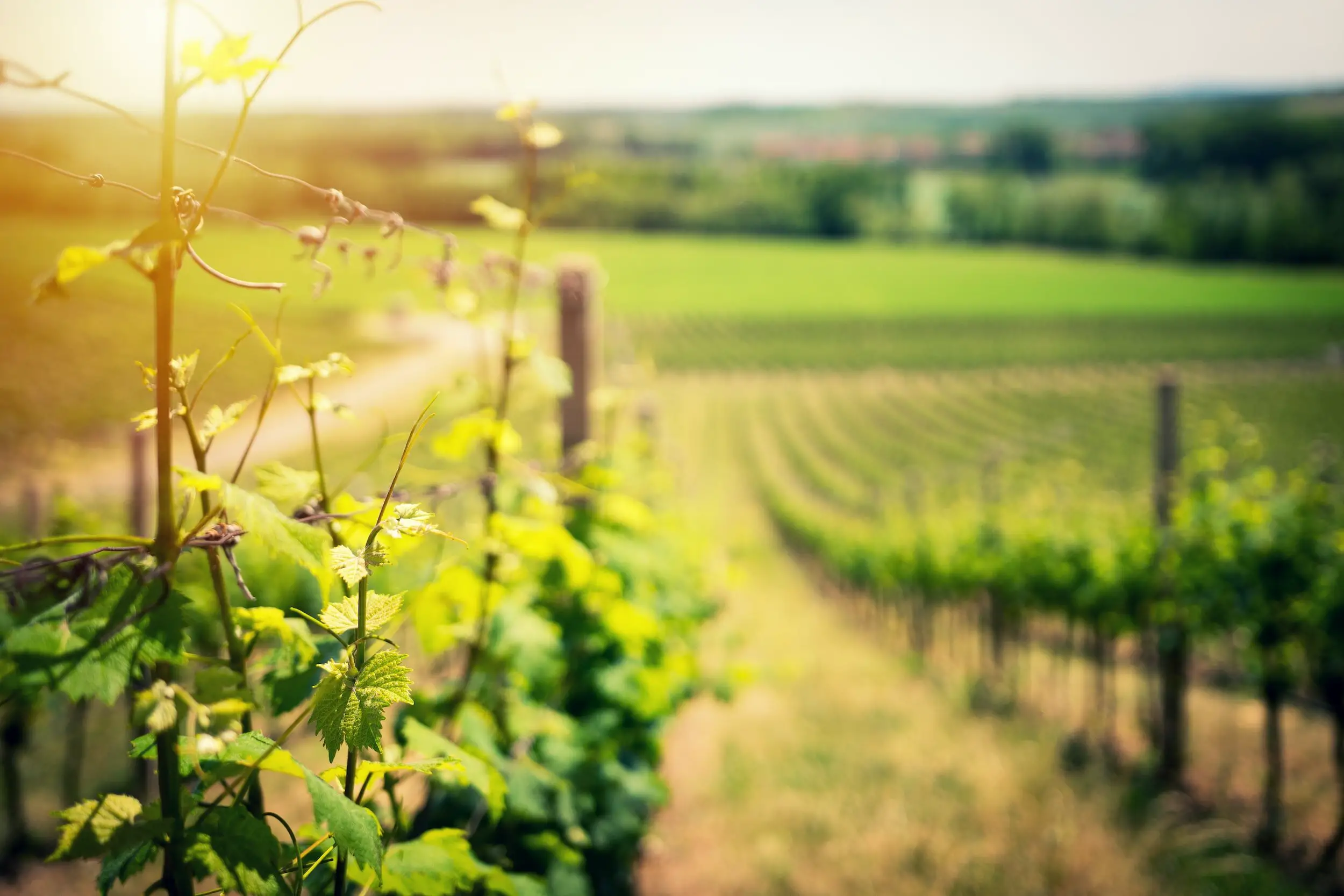
Oak barrels impact the flavor and character of wines through aging. Remember:
- Oak barrels enhance wine flavor and change the wine’s structure.
- Aging in oak barrels contributes to wine quality.
- Winemakers carefully choose oak barrels to shape their wines.
- Look for clues on wine labels that indicate oak influence, like spice, vanilla, and chocolate.
Oak barrels showcase the craftsmanship and artistry of winemaking. They have a profound influence on the flavor, texture, and aging potential of wine, creating complexity and balance.
Thirsty for More?
Here’s a great peek at the history of oak barrels and wine, including a video of a cooperage.
Just getting started in wine? Check out this post on 11 famous wine regions and their signature wine styles.
Fermentation is the magic of turning juice into wine. Here’s an overview of how wine fermentation works. It’s a little nerdy, but you might just like it!



